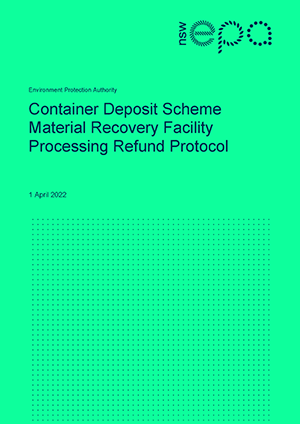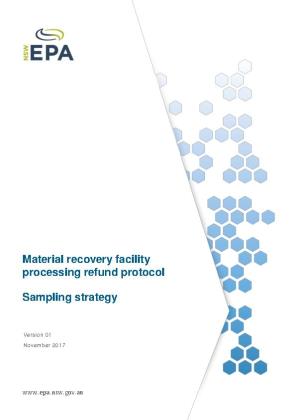Become a MRF operator: contact the scheme coordinator, Exchange for Change (EfC). EfC is contracted by the government to deliver key parts of the scheme.
Eligibility to claim: MRF operators must first confirm eligibility with Exchange for Change a minimum of 28 calendar days before the month in which they wish to first claim. MRF operators must also have an agreement with the local councils it collects material from, so that local councils have an opportunity to share in the refunds.
Material Recovery Facility Processing Refund Protocol
The Protocol sets out:
- how Exchange for Change determines amounts payable to material recovery facility (MRF) operators
- the process MRF operators must use to claim and receive processing refunds
Exchange for Change pays processing refunds to MRF operators for containers they collect when requirements of the Waste Avoidance and Resource Recovery Act 2001, Regulation and MRF Protocol are complied with.
The methodology for determining the amounts payable is set out in the Protocol (PDF 1.2MB).
The Protocol does not apply to MRF operators that are a bottle crushing service operator or an alternative waste treatment (AWT) plant operator. Bottle crushing service operators should refer to the Bottle Crushing Service Operator Processing Refund Protocol (PDF ).
The current MRF Protocol was gazetted on 1 April 2022.








